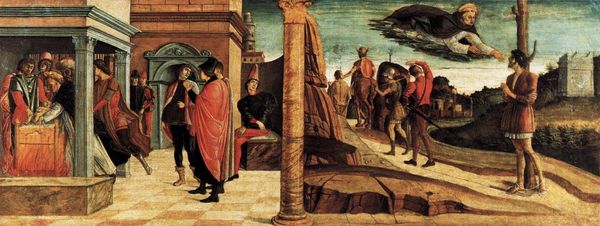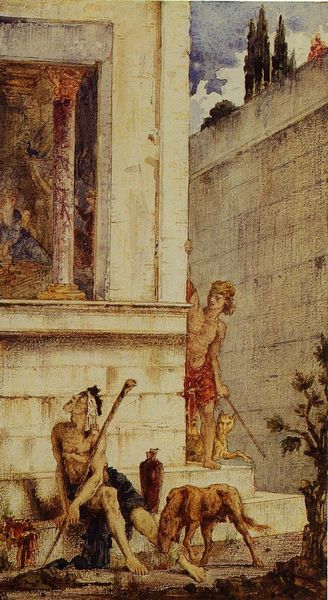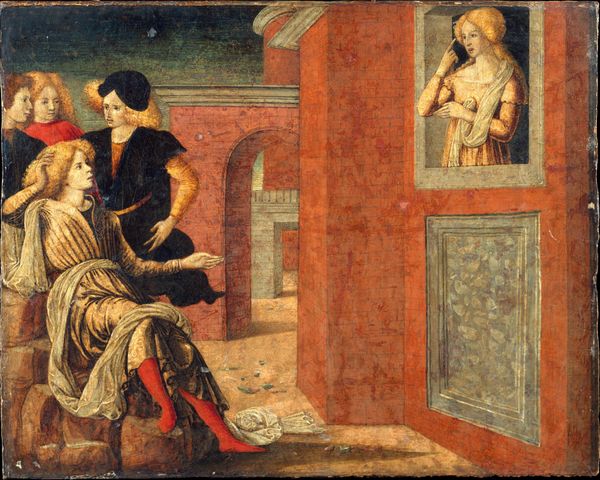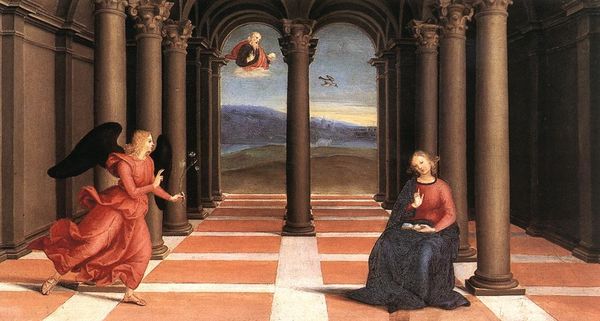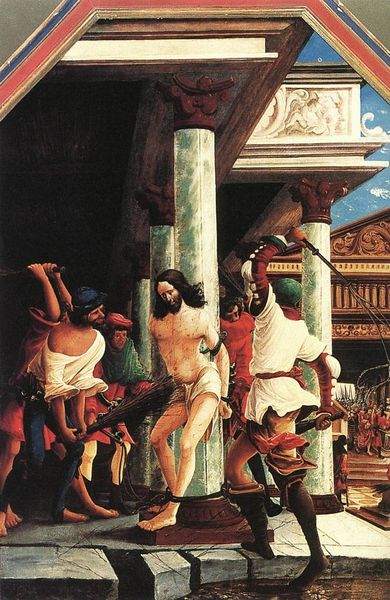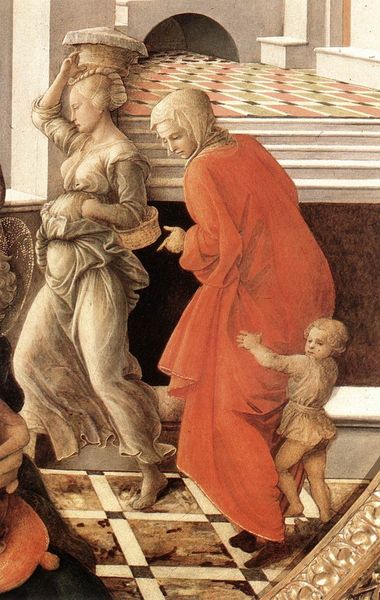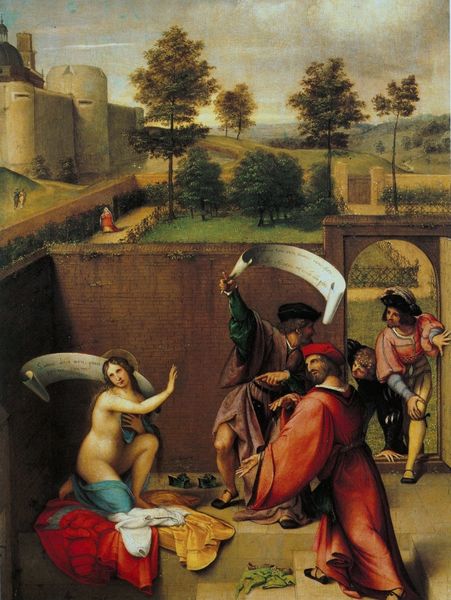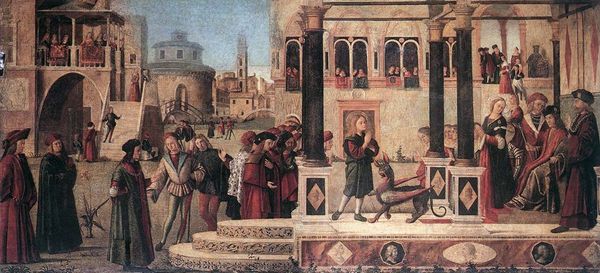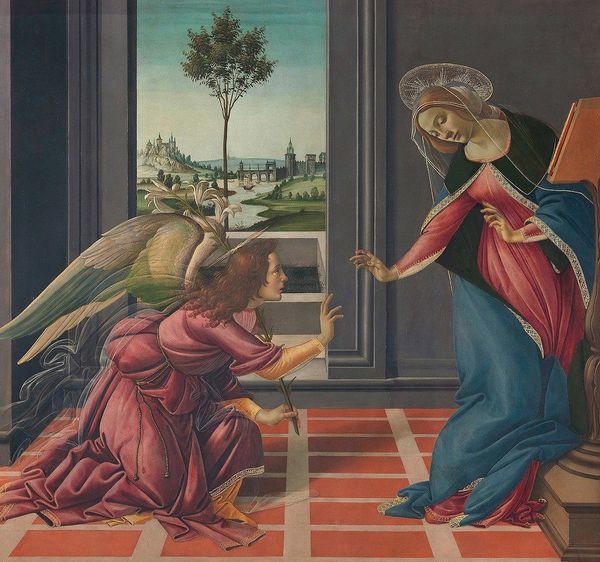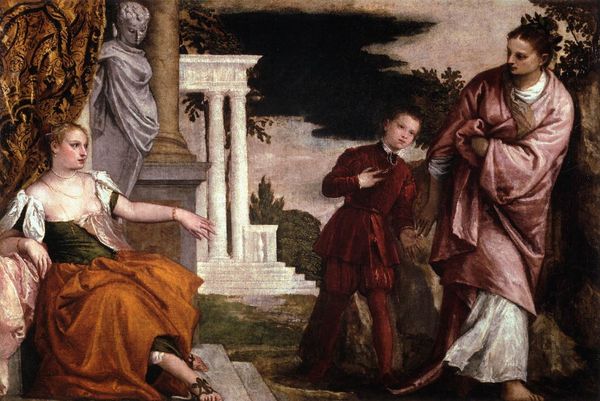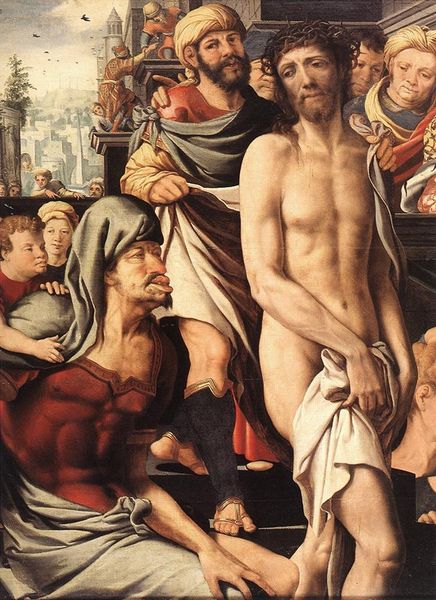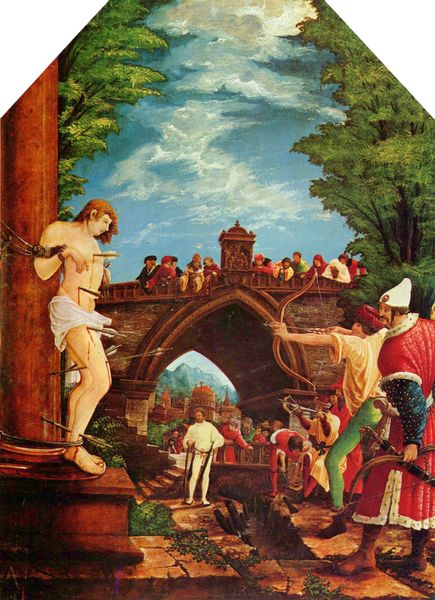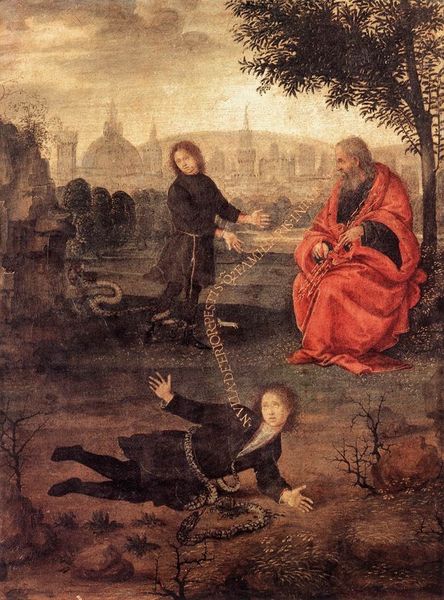
painting, oil-paint
narrative-art
painting
oil-paint
landscape
perspective
flemish
cityscape
early-renaissance
Copyright: Public domain
Curator: What grabs me immediately is the overall tranquility of the space. There’s a hushed stillness that feels almost dreamlike. Editor: Yes, and if you consider Jan van Eyck's "The Virgin of the Chancellor Rolin," crafted around 1436, what strikes me most is its fascinating convergence of the earthly and the divine. It's currently housed in the Louvre, and its innovative portrayal of sacred space offers such compelling insights into Early Renaissance sensibilities. Curator: The division of space, though, feels quite staged, doesn't it? Rolin is firmly planted in the terrestrial realm, gazing upward toward Mary, who seems equally present in his world, yet undeniably ethereal. And have you ever noticed how van Eyck handles light? It feels almost…mathematical. Editor: It's controlled, definitely, lending that crisp clarity that became a hallmark of the Early Renaissance in the Netherlands. The light clarifies details that would otherwise go unnoticed and this clarity offers the chance for the painter to portray reality, with high degree of exactness, I can say, to mimicry. Beyond technique, this artistic choice represents a wider cultural reverence. The artist takes care of reality! What could that tell us about the society that embraces that care. Curator: Speaking of detail, the distant cityscape visible through the arches is simply astounding. That tiny bridge bustling with miniature figures really adds to the work's visual intrigue. Editor: And I have a fascination for how that tiny world serves as an allegory for Rolin's influence. He’s not just praying, he’s presiding. He is powerful, yes, but also so close to the end. Van Eyck shows what society cares about, but also what they fear. Curator: It really brings a certain immediacy and an accessibility. It transcends being merely a religious painting; it feels deeply embedded within its own time and its place, a window into a specific moment in history. It exemplifies the emerging Renaissance patronage system. It’s also an assertion of power of secular patronage in the era. The chancellor essentially commissions his place in eternal dialogue with divinity. Editor: Thinking about it, I realize that the painting doesn't portray divinity in a way that separates it from our world. Instead it gives to those on the other side of the painting a path that they can choose to connect to something larger, even though we do not necessarily know where the door goes or leads to. Thank you for this reminder about Van Eyck.
Comments
No comments
Be the first to comment and join the conversation on the ultimate creative platform.
